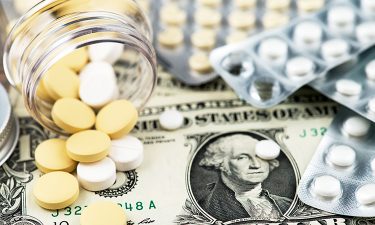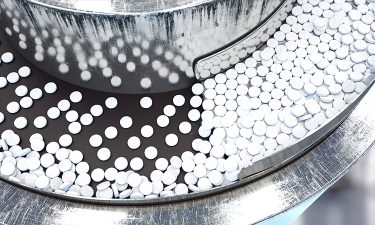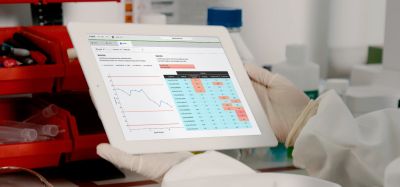How will Trump’s ‘Buy American’ executive order impact pharmaceutical supply chains?
Posted: 2 November 2020 | Victoria Rees (European Pharmaceutical Review) | No comments yet
On 6 August 2020, US President Donald Trump signed an executive order, dubbed ‘Buy American’, with the aim of increasing the production of essential medicines in the US for domestic use. Here, Victoria Rees discusses the order and what it means for drug manufacturers in the US and rest of the world.


SOARING DRUG prices in the US have been a controversial issue for many years and with the costs of healthcare under the spotlight due to the COVID-19 pandemic, the American government is under pressure to find a solution. One potential approach to bring down the price of medicines is outlined in the ‘Buy American’ executive order signed by President Trump. The order is intended to hit two birds with one stone: boost American essential drug manufacturing, thereby strengthening the pharma supply chain for Americans and reduce costs for patients in the US.
As a reaction to the outbreak of COVID-19 and other potential health threats, the order outlines that the US must reduce the country’s “dependence on foreign manufacturers for essential medicines, medical countermeasures and critical inputs,”1 to ensure that the country can be a self-sustaining nation regarding basic healthcare.
However, with only the beginnings of the work outlined in the executive order underway, it remains to be seen whether it will work as intended and come to fruition.
The executive order – intentions and goals
The four main aims of the executive order are to increase the development of domestic medicine production, ensure long-term demand for said medicines, maximise production capabilities and combat counterfeit medicines.1 With a robust manufacturing network and distribution vulnerabilities identified and mitigated, the US should, in theory, have a resilient supply chain for essential medicines.
Although the executive order is meant to increase the production of essential medicines in the US, this is a list yet to be determined by the US Food and Drug Administration (FDA) Commissioner.1 Essential medicines and their ingredients are defined as those that “are medically necessary to have available at all times in an amount adequate to serve patient needs and in the appropriate dosage forms.” Also, for the drug to be considered “made in the US”, its ingredients must be produced or the finished drug product/device must be manufactured, prepared, propagated, compounded or processed in the US.1


The order further directs the FDA and US Environmental Protection Agency to prioritise domestic pharmaceutical ingredient manufacturers during regulatory review, giving them a significant advantage over international companies.3
Lastly, the order commits to combat the distribution of counterfeit medicines on ecommerce platforms and third-party online sellers involved in the government procurement process.1
All in all, the goals of the order are noble; but what would be the reality of their coming into force and impacting pharmaceutical supply chains?
Impact on US manufacturers
Within 90 days of this executive order – on 4 November 2020 – each department and agency involved in the procurement of essential medicines, in consultation with the FDA Commissioner, is required to develop and implement procurement strategies.1
With a robust manufacturing network and distribution vulnerabilities identified and mitigated, the US should, in theory, have a resilient supply chain for essential medicines”
These include long-term contracts between at least two manufacturers, which will ensure competition and further reduction of medicine costs. To aid drug or ingredient manufacturers, guidance documents are to be streamlined to provide for the development of advanced production facilities.1
Furthermore, following the identification of essential medicines by the FDA Commissioner, the US Trade Representative is then required to modify federal procurement product coverage under applicable Free Trade Agreements and the World Trade Organization Agreement on Government Procurement to exclude coverage of essential medicines. This means that essential medicines made outside the US may no longer be procured by its government and domestic manufacturers will consequently be engaged. According to the order, federal procurement may also be further altered as the FDA Commissioner sees fit.1
To then expediate the process of getting essential medicines to patients, the order outlines that the FDA can accelerate approval or clearance of US producers of essential medicines, helping manufacturers to swiftly make a profit on their drugs sold to the government.
Despite the proposed benefits of this executive order, critics argue it will only cause disruption to pharmaceutical businesses and divert vital resources away from the effort to develop COVID-19 vaccines and treatments. In an open letter published by the US Chamber of Commerce, representatives from national, state and local organisations stress that the US does not produce all of the raw materials or intermediate goods that are required for drug development or production of the medical equipment needed to combat the COVID-19 pandemic.4 They say that although the order is intended to help US patients during the pandemic, it will be counterproductive and could instead cause medicine shortages.
After the procurement of medicines, the order instructs the US government machinery to improve and streamline the supply chain for essential medicines”
In another open letter to President Trump, pharmaceutical and health organisations write: “Proposals to drive all manufacturing to the US not only overestimate the potential feasibility and underestimate the time and effort it would take to make such changes, but also misunderstand that a diverse pharmaceutical supply chain is precisely what enables the industry to respond quickly and make adjustments in its supply chain sourcing during natural emergencies and global public health crises.”5
While the order will attempt to engage US manufacturers and reduce the impacts of COVID-19 on the US population, it is likely that this will have further implications. As a result, pharmaceutical manufacturers will be under high pressure to make treatments and vaccines for COVID-19, produce increased levels of essential medicines or their ingredients and update their processes to accommodate for this.
The global picture: supply chains
After the procurement of medicines, the order instructs the US government machinery to improve and streamline the supply chain for essential medicines. By 2 February 2021, the Secretary of HHS must identify vulnerabilities in the US medicine logistics network.1 Any weaknesses must then be mitigated, including reviewing FDA regulations to determine whether any of those regulations may be a barrier to domestic production of essential medicines or recommending any changes to applicable law to President Trump.1


Others have pointed out that this will not just negatively impact the rest of the world – it could leave American patients with medicine shortages. In the US, one in every three pills consumed is produced by an India generics manufacturer.7 Dr Amesh Adalja, a Senior Scholar of Johns Hopkins Center for Health Security, US, said: “While it is important, especially when it comes to pandemic preparedness, to have secure supply chains it does not mean that supply chains must be all domestic.”
The order outlines that the FDA can accelerate approval or clearance of US producers of essential medicines, helping manufacturers to swiftly make a profit on their drugs sold to the government”
Although it seems the flow of medicines from the rest of the world to the US will cease, this is not entirely the case. Despite the agencies in the US being granted the ability to refuse imports of essential medicines if the facilities in which they are produced refuse or unreasonably delay an inspection,1 there are ways that companies may still deliver their drugs to the country.
Firstly, medicines that are not classed as essential will be excluded from any regulatory changes and others may be able to work through several loopholes in the order. One of these is that if medicines classed as essential are not made in sufficient or reasonably available commercial quantities in the US, then they are to be imported. Furthermore, if a public health emergency occurs, the order says the required medicines can be imported.1
Will the executive order come into force?
With 72 percent of manufacturers that supply pharmaceutical ingredients to the US being located overseas, including 13 percent in China,2 it is clear that if the executive order comes into full force it could overhaul the US pharmaceutical supply chain, whether with positive or negative impacts.
However, with the timeframe of the executive order instructions set in stone it leaves little room for flexibility, a potential misstep with the upcoming election. If Trump fails to retain his position, it could see his rival Joe Biden reversing his efforts to strengthen US manufacturing of essential medicines. Only in November will the US decide if Trump’s efforts to provide a stable supply chain are enough to let him see his plans through.
About the author
Victoria Rees is the Junior Editor for European Pharmaceutical Review and Drug Target Review.
References
- Executive Order on Ensuring Essential Medicines, Medical Countermeasures, and Critical Inputs Are Made in the United States | The White House [Internet]. The White House. 2020 [cited 2 October 2020]. Available from: https://www.whitehouse.gov…
- Collins M., Trump signs order in Ohio requiring government to buy ‘essential’ drugs from US companies [Internet]. Usatoday.com. 2020 [cited 2 October 2020]. Available from: https://www.usatoday.com…
- Reuters Staff. Trump executive order to boost U.S. drug manufacturing -Navarro [Internet]. U.K. 2020 [cited 2 October 2020]. Available from: https://uk.reuters.com/article/idUKL1N2F80KE
- Mnuchin S. et al. Open Letter to Donal Trump [Internet]. Uschamber.com. 2020 [cited 2 October 2020]. Available from: https://www.uschamber.com/sites/default/files…
- Letter to President [Internet]. Accessiblemeds.org. 2020 [cited 2 October 2020]. Available from: https://accessiblemeds.org/sites/default/files…
- PhRMA Statement on the “Buy American” Executive Order [Internet]. Phrma.org. 2020 [cited 2 October 2020]. Available from: https://phrma.org/Press-Release…
- Maegan Vazquez C. Trump signs ‘buy American first’ pharma executive order [Internet]. CNN. 2020 [cited 2 October 2020]. Available from: https://www.cnn.com/2020/08/06/politics/donald-trump
Issue
Related topics
Drug Counterfeiting, Drug Manufacturing, Drug Markets, Drug Supply Chain, Manufacturing, Production, Regulation & Legislation, Supply Chain
Related organisations
Johns Hopkins University, Pharmaceutical Research and Manufacturers of America (PhRMA), US Department of Health and Human Services (HHS), US Food and Drug Administration (FDA), World Trade Organization
Related people
Dr Amesh Adalja, Joe Biden, President Donald Trump, Stephen Ubl









